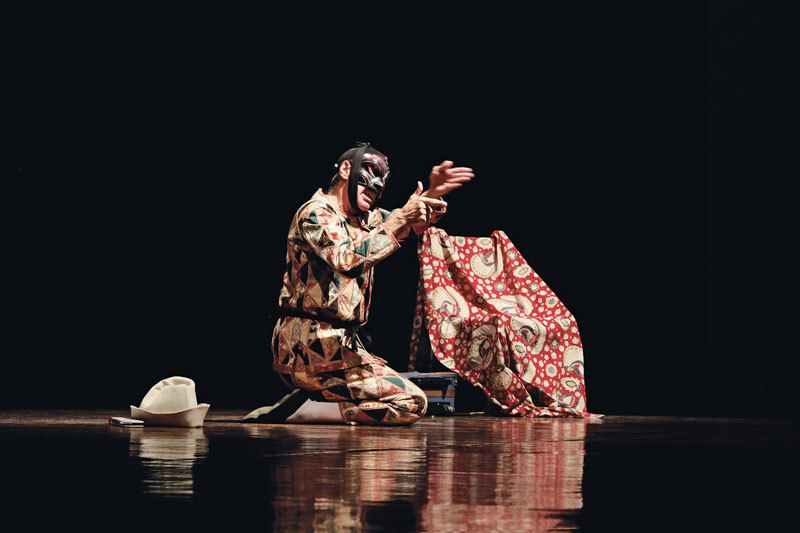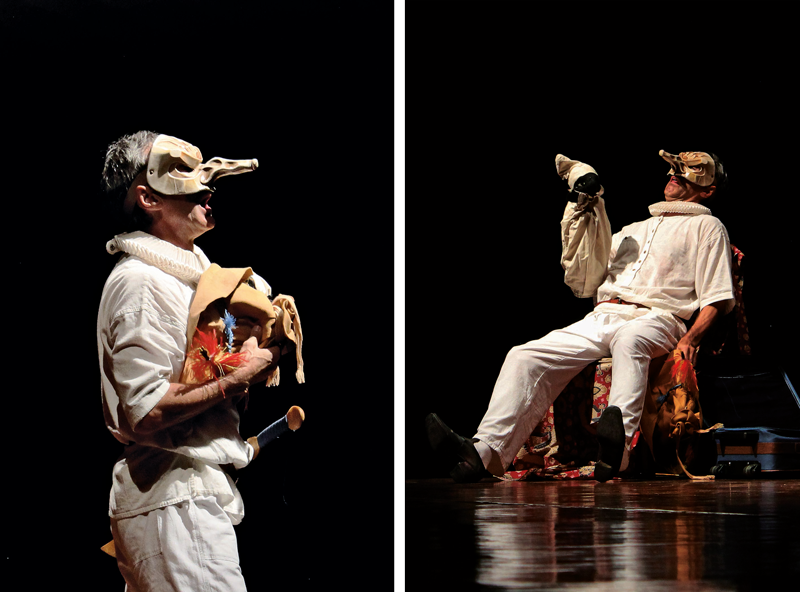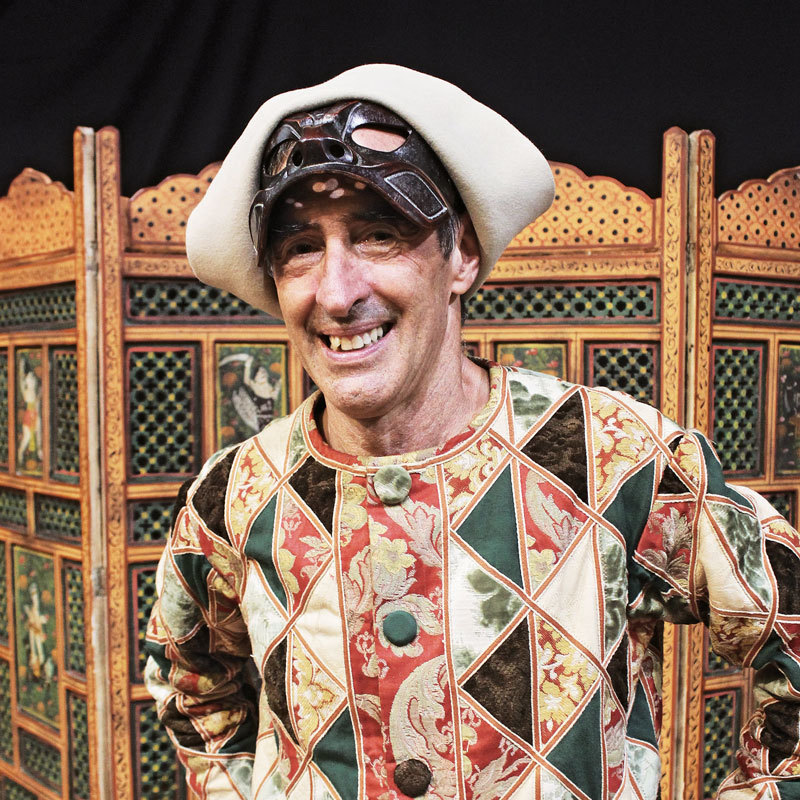Italian actor Enrico Bonavera recently presented an inspirational, thought-provoking performance I segreti di Arlecchino (The Secret of Harlequin) about the prominent character in Commedia dell’arte. Audiences at Goethe Haus Jakarta, were in complete awe of his portrayal of the character.

Commedia dell’arte
Commedia dell’arte was the pioneer, of sorts, of humorous theatrical form believed to have its origins in the Italian Commedia dell’arte troupe in 1545. Its influence can be seen throughout Europe, from the French pantomime to the English harlequinade.
In the world of performing arts, Commedia dell’arte has since been one of the most popular theatrical performances that signifies a strong sense of ensemble acting in a set of improvisations through a firm framework of masks and props. Staging, simply put, is minimalistic – rarely anything more than street plots. Throughout the scene, actors have to improvise comedy acts, usually based on audience’s reactions or a pre-established scenario. Musical accompaniment and impromptu dialogue also mark the scene.
Props and Characters
There are no elaborate plots in Commedia dell’arte. Instead, professional actors need to make use of props, including masks. This especially helps actors project their character’s emotions through the improvised, often obscene, body language. Among the specialties Commedia dell’arte embraces are a stock of scenarios, witty exchanges and a collection of characters which portray established social types in order to keep a traditional continuity while allowing diversity. For a comprehensive understanding of the Commedia dell’arte the mask is more substantial than the player.

Characters in Commedia dell’arte include Pantalone (the miserly Venetian merchant), Dottore Gratiano (the pedant from Bologna) and most notably Arlecchino (the witty servant, nimble and gay; as a lover often heartless). Arlecchino as known as Harlequin then began immediately detectable because of his black mask with tiny eyeholes and quizzically arched eyebrows and patchwork costume and noticeable as satire in the eyes of Italian theatrical “scene”.
Bonavera on Harlequin
In the emergence of the Commedia dell’arte (mid-16th century) Harlequin was depicted as a wily and cowardly covetous servant. He was trapped in an unfortunate crisis of having no money or food, thus making him superstitious. Through the improvisational acts in the early 17th century, he become a faithful valet, patient, credulous and amorous. This led to him getting into trouble often, but he managed to disengage himself with his clever— and uncontrollable—mind. Unlike his fellow servants, he was somewhat amoral without being vicious as he did not seek revenge against those who fooled him.
Harlequin’s costume was made of many coloured patches similar to a peasant’s shirt, and long trousers. The black mask with tiny eyeholes and quizzically arched eyebrows symbolised satyric sensuality, catlike slyness and stunning credulity.
In an interview with NOW! Jakarta, Bonavera noted that the focus of The Secret of Harlequin was the discovery of the technique and language of the mask; the use of the strong sense of ensemble acting through a set of improvised techniques including impromptu dialogue. They were expected to acknowledge and deliver any kind of act to the audience.

Bonavera projected his character’s emotions through distinctive gestures and signals. Impromptu dialogue was used as a way for the audience to interpret the acts.
What a total successful show in Jakarta thanks to his astute skills! The theatrical performance was a cooperation between the Italian Embassy and Istituto Italiano di Cultura in Jakarta.
For more information about Enrico Bonavera, visit www.enricobonavera.com







